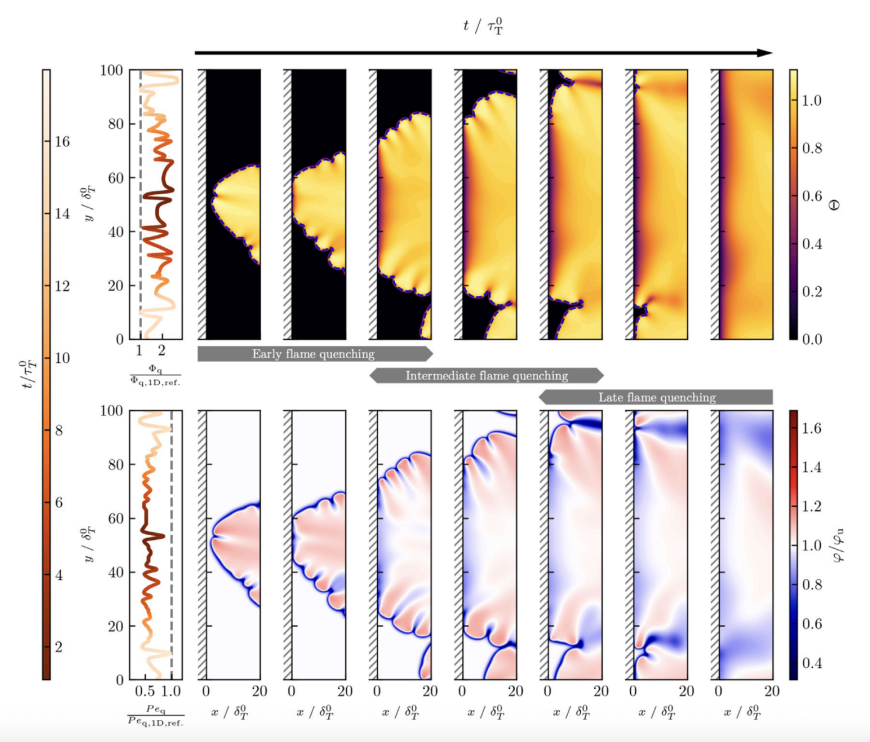What happens when a hydrogen flame interacts with a wall?
New publication
09.07.2025
Fundamental Research with Practical Impact – Supported by the DFG Priority Programme SPP 2419 HyCAM

What happens when a hydrogen flame interacts with a wall?
Fundamental Research with Practical Impact – Supported by the DFG Priority Programme SPP 2419 HyCAM
Hydrogen is a key element of the energy transition. In the future, CO2-free electricity will be generated in highly efficient gas turbines. Combustion in such systems takes place in confined chambers. While boundary layers are a well-known topic in fluid mechanics, flame–wall interaction is just as crucial in combustion.
But what happens when a thermodiffusively unstable hydrogen flame burns near a wall? How close does the flame get to the wall, when does it quench, what kind of heat fluxes occur, and how is this different from conventional fuels?
Let’s answer the last question right away: a lot is different, and you can see that in the attached video. The wall is on the left. What is shown – the heat flux, the temperature, and the equivalence ratio (from left to right)
We’ve recently published a two-part investigation looking into more details.
Part 1: https://lnkd.in/e7wyz4SG
In the first part, we studied a two-dimensional head-on quenching (HOQ) setup to isolate the effects of thermodiffusive instabilities on the quenching process. Compared to a one-dimensional laminar flame, we observed:
* Significantly increased wall heat fluxes,
* Reduced quenching distances,
* and a strong correlation between these effects and the local flame reactivity (I\_0).
The increase in wall heat flux is not due to flame wrinkling or an increase in global consumption speed, but is largely tied to increased local reactivity and the accompanying mixture variations introduced by the instabilities.
Part 2: https://lnkd.in/e9f-C8HE
The second part extends the analysis across a range of gas turbine and engine-relevant conditions: varying equivalence ratio, pressure, and unburnt gas temperature. Key findings include:
* The relative wall heat flux enhancement scales consistently with the reactivity factor across all operating conditions
* A predictive model is proposed to estimate wall heat flux enhancement from 1D laminar flame data.
Together, the two parts contribute to a better understanding of near-wall hydrogen combustion and provide a basis for modeling flame-wall interactions under thermodiffusively unstable conditions.

